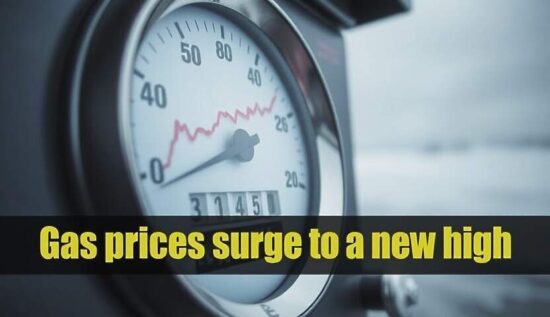Gas prices in the EU are currently rising rapidly. The price for the reference value climbed to its highest level since October 2023. On Friday, gas was traded at a significantly over 55 euros per megawatt hour. The reference value is the price of the TTF, a virtual trading point, through which the gas trade in Europe is conducted.
At first glance, the cause of this is the low fill rate of gas storage in the EU. Due to the low temperatures and the windless weather, which requires the increased burning of gas, the fill rates sank to under 51 percent. For comparison, they were at 68 percent a year ago.
Another reason is that Ukraine has stopped the transport of Russian gas through its territory as of January 1. With this measure, the aim is to reduce Russia’s foreign exchange earnings and to exert influence on the course of the war. However, the rising gas price shows that the supporter countries of Ukraine in Europe are being hit much harder than Russia.
Price pressure is also caused by the EU’s legislation, which prescribes certain fill rates by specific deadlines. The market therefore expects a stronger demand from the EU member states in the coming months, which leads to price increases. Currently, the EU is desperately trying to buy LNG, said the energy analysts Helge André Martinsen and Tobias Ingebrigtsen of the Swedish bank DNB. The increased demand lets the price rise.
But the most important reason: the still-serving federal government continues to refuse to accept Russia’s offer to supply gas. Russia has offered to deliver gas to Germany through the still-intact Nord Stream 2 pipeline. However, the economy minister, Robert Habeck, remains in his assertion that the abandonment of Russian energy sources is a success story, which is mainly due to him. The economic data of Germany and the EU, however, speak a different language.





